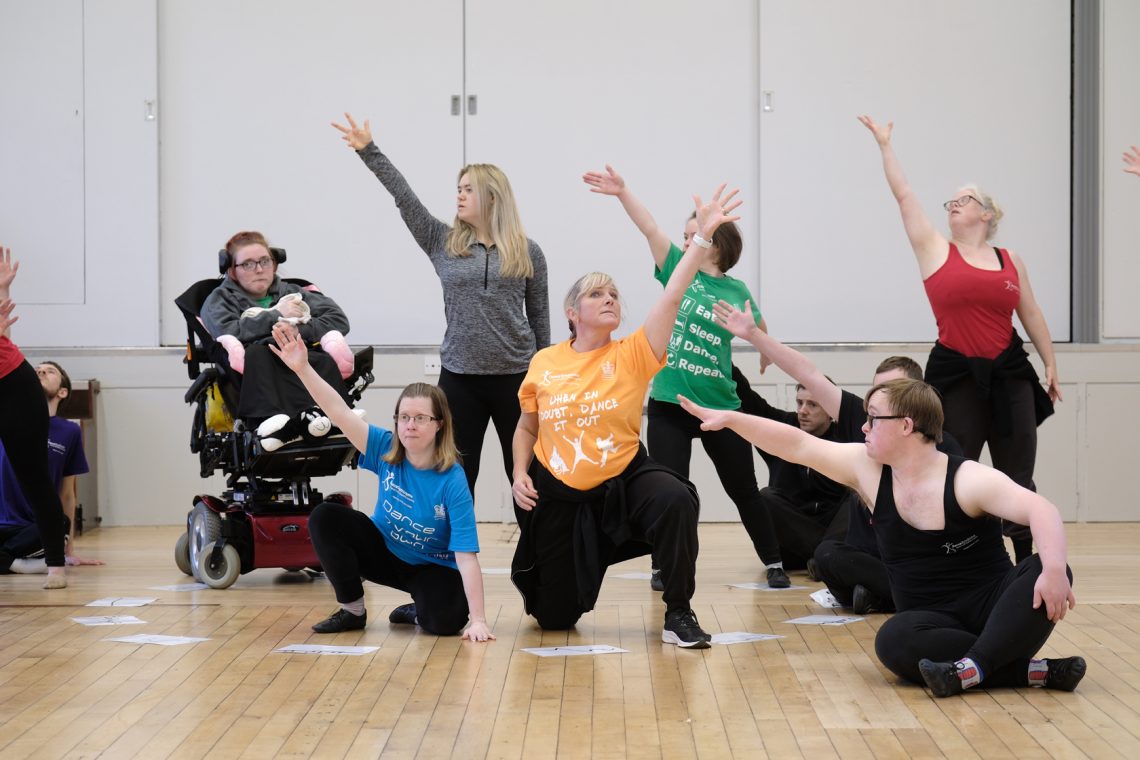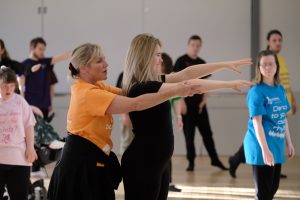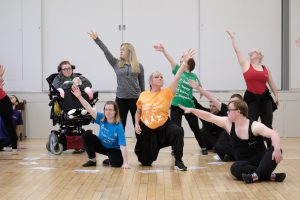
What Does Inclusion Look Like? The Small Things That Make a Big Difference
Throughout National Inclusion Week, DanceSyndrome, along with many other organisations, shares stories about the importance of inclusion and why society needs to become more inclusive. But what does that really mean in practice?
When people hear the word “inclusion”, it can feel like something complicated, expensive, or reserved for specialist consultants. But at DanceSyndrome, we’ve learned that inclusion isn’t about ticking boxes or making grand statements. It’s about the small, everyday choices we make to ensure that everyone feels welcome, supported and able to be their own unique self.
In our dance sessions, we constantly make little adjustments to help our dancers to feel safe and confident. It might be as simple as:
• Slowing down instructions so people have time to process them.
• Using gestures alongside words to make communication clearer.
• Offering options instead of expectations, so individuals can choose how they take part, making it meaningful to them.
• Building in pauses and reassurance, so no one feels rushed or judged.
• Remembering that everyone’s way of moving is valid and beautiful.
But these are just the visible things that happen in the dance space. DanceSyndrome’s approach to being completely inclusive and accessible goes far beyond this. If you are a regular follower of our social media, you may have heard us use the phrase “…what can be achieved when people are supported properly.” This goes far beyond adaptations to dance and movement.
On a daily basis, our team works to support our Dance Leaders, and their families, in whatever ways they need us to. This includes supporting people to remove a wide range of barriers that might otherwise prevent them from pursuing the opportunities that we offer. This might include seemingly small things like booking taxis, shopping for clothing, ordering sunflower lanyards/access cards, changing the method we use to communicate with them or providing easy read communications to much bigger issues like helping them to access other volunteering or employment opportunities, or navigating social services and healthcare system. We employ a trained counsellor to attend out Weekly Company Class each week, to provide additional mental health support to our Dance Leaders. We appreciate that people may need a carer or support worker with them to provide physical or emotional support to come to our events, so we aim to support with financial barriers related to this, because we understand that everyday living is expensive when you always need to take a second person everywhere you go.
We invest our time and money into helping people to overcome these challenges because it is fundamental to being inclusive. These small adaptations are powerful. They tell people:
“You matter here.”
“Your way of expressing yourself is just as important as anyone else’s.”
“We want you to be a part of this.”
Being treated this way is important to EVERYONE, but especially to people with learning disabilities who might have been excluded from many aspects of society throughout their lives.
These everyday actions prove that inclusion in dance isn’t any different from inclusion in the workplace, the classroom or the community. Whether you’re a teacher, a manager, or a team leader, the same principles apply in your space. When you communicate clearly, allow time, create safety, and value individuals, they will thrive.
This is a core part of the way that DanceSyndrome has always operated. We are learning new ways to be more inclusive every day, and we always aim to share learning and work in partnership when we can.
If you work for an organisation that is looking for help to become more inclusive, we can share our approach through our successful Inclusion in Action workshops. These sessions are for any organisation that wants to build more inclusive workplaces. The workshops are co-delivered by people with learning disabilities, offering insights based on lived experience and practical ideas that can be put into practice quickly and easily, but make a significant difference. You will leave not only with a new understanding of inclusion, but also with a pledge to make your own simple changes to make your environment more welcoming.
For those working in the dance sector, Breaking Down Barriers is our course specifically for dance professionals who want to make their practice more accessible. It explores the challenges dancers with learning disabilities may face and gives you practical tools, action plans and resources to create spaces where every dancer can thrive.
We are delivering an online version of Breaking Down Barriers on Monday 10th November 2025. If you would like to book a place on this course, please visit this booking page.
For more information about both Inclusion in Action and Breaking Down Barriers, please visit our Inclusion Training page.


